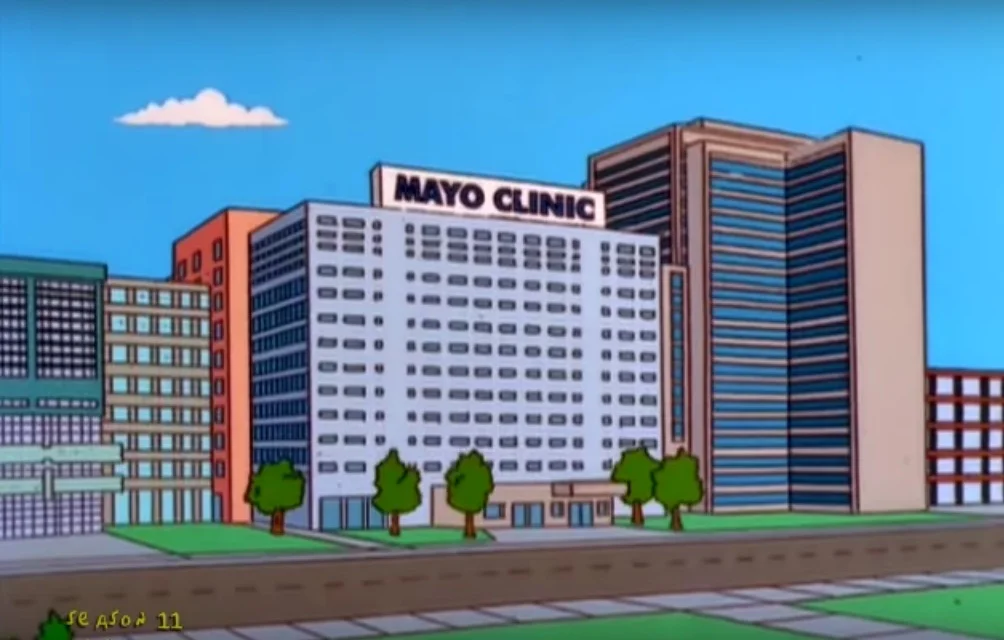Four biotech startups to watch in Rochester
Although most of the biotechnology and pharmaceutical companies in Minnesota are located up in the Twin Cities metro, in the last few years new biotechnology startups have begun sprouting up here in Rochester. The emergence of these companies is largely the result of a Mayo Clinic policy decision — made about five years ago — to allow physicians and researchers to commercialize their most promising innovations. In this article, we profile four local startups that are developing exciting new medical techniques for fighting disease and improving surgical outcomes.
Sonex Health
Carpal tunnel syndrome is a pinched nerve in the wrist that causes pain, numbness, tingling, and weakness of the hand. Approximately 12 million people in this country have carpal tunnel symptoms. Typical carpal tunnel surgery involves making an incision in the palm and the recovery time can take four to six weeks. About 500,000 carpal tunnel surgeries are performed per year. Darryl Barnes, founder and CEO of Sonex Health, estimates that nearly 2.5 million patients avoid doing carpal tunnel surgery and just live with the symptoms, risking permanent nerve damage.
Sonex Health was established in 2014. Barnes explained that Sonex Health’s mission is to be the leader in ultrasound-guided surgery and to equip physicians with therapies that reduce invasiveness, improve safety, and reduce the cost of care. Sonex Health provides the least invasive and safest way to perform carpal tunnel release surgery with the fastest recovery. Their motto is “Recovery in millimeters, not months.”
Completed carpal tunnel surgery with just a Band-Aid to cover the incision.
Sonex Health launched the SX-One MicroKnife in mid-2017, and physicians across the country have performed over 1000 procedures with this device. Three Rochester-area physicians, two at Mayo and one at Olmsted Medical Center, use the SX-One MicroKnife for carpal tunnel surgery.
The SX-One MicroKnife offers the physician the ability to perform carpal tunnel surgery in an office with local anesthesia. Ultrasound enables the physician to see all the structures in the patient’s hand and wrist without making a big incision. The physician inserts the SX-One MicroKnife through a 4-5 mm incision (smaller than the diameter of a pencil) in the wrist and cuts the carpal ligament. This incision reduces the pressure on the nerves that run up and down the forearm. The surgery takes minutes and the wound is covered with a small bandage. The patient recovers in three to six days as opposed to four to six weeks as experienced with traditional surgery.
Resoundant
With recent studies showing that one in three people are at risk for non-alcoholic fatty liver disease, your doctor is concerned that you might be one of those cases. Instead of ordering a painful needle biopsy of your liver, your doctor orders a Magnetic Resonance Elastography (MRE) scan to confirm whether you have liver disease and to determine the extent of it. MRE is a non-invasive medical imaging technique that measures the stiffness of soft tissues such as the liver. Diseases can cause soft tissues to become stiff.
Mayo Clinic radiologist Richard Ehman led the research program that developed MRE. “One of the greatest joys in bringing a technology to the healthcare marketplace is to hear from the patients who have truly benefited from the technology,” said Ehman. “It's one of the things that make imaging research so rewarding — the speed at which new innovations can enter the marketplace and begin to impact patient care for the better."
Resoundant was established in 2013 to develop and manufacture MRE technology. Resoundant works with three of the major MRI manufacturers (GE, Siemens, Philips) to sell MRE to radiology practices across the globe. Resoundant educates professional medical societies, patients, and providers about the applications and benefits of MRE.
MRE scan showing different degrees of stiffness in the liver in four different patients. The image on the far right with large red areas shows the most stiffness in the liver.
MRE measures stiffness by assessing four images across the entire liver, resulting in a comprehensive and incredibly accurate diagnosis not available with other non-invasive technologies. Many diseases, such as liver cirrhosis, cause changes in stiffness that are undetectable on a traditional MRI exam. The radiologist uses MRE to diagnose liver fibrosis at an early stage, with no pain and much lower cost, compared to the traditional method of a liver biopsy.
Patients report that seeing the results of an MRE exam can be a profound experience. A patient was diagnosed with Primary Biliary Cholangitis (PBC), a rare autoimmune liver disease. She recalled, "Seeing my liver and the state of disease for the first time was a very powerful, emotional moment — it left me speechless." She continued, "MRE painted a true picture of the PBC progression. I used to be mad at my liver, but then I felt bad for it and decided to protect and take care of it as much as possible."
Ambient Clinical Analytics
Medical errors increase expenses to the healthcare system while decreasing the quality of care, particularly in the intensive care unit (ICU). So, doctors needed new software to help them monitor and diagnose patients, which improved the quality of care.
Ambient Clinical Analytics was launched in 2014. The company sells the following clinical decision support systems for hospitals and emergency rooms: AWARE Critical Care, AWARE Sepsis DART, Mayo Clinic YES Board, and AWARE Certain. These clinical decision support systems reduce overall healthcare costs and improve patient outcomes and satisfaction.
AWARE stands for Ambient Warning and Response Evaluation. AWARE is a clinical tool that reduces information overload by using analytics to filter relevant patient data and provide timely, actionable information. Ambient has received FDA Class II clearance for the AWARE software products.
AWARE Sepsis DART software
The medical caregiver uses the AWARE software, viewed on a tablet or monitor, at the patient's bedside and reviews the vital data and recommended actions to take. AWARE Critical Care filters relevant patient data and provides best care practices for improved patient outcome. The Mayo Clinic YES Board provides real-time patient information for the care team, which helps busy emergency rooms and hospitals manage patient loads. Like a GPS tracker, the YES Board can locate specific patients, staff, and medical equipment. Medical staff use AWARE Certain to record patient data when admitting patients to the hospital. AWARE Sepsis DART electronically monitors patients at risk of sepsis in the emergency room or ICU. If sepsis might be present or developing, the software alerts the doctors to begin treatment, and monitors treatment progression during the first six hours of care.
Kevin Kronmiller was near death from severe sepsis two weeks after receiving a liver transplant. In the ER, his heart nearly stopped. Sepsis is among the most expensive in-hospital conditions and is incredibly difficult to detect and treat. Close to 60 percent of patients with severe sepsis don't survive. Thanks to the AWARE Sepsis DART software, Kevin's doctors were able to detect and treat Kevin's sepsis and he made a full recovery.
Vyriad
Vyriad might the first biotechnology startup to make it big in southeast Minnesota. Researchers at Vyriad want to give cancer a sucker punch by engineering viruses to fight the bad guys. The company’s mission is “to create a single shot to cure cancer using engineered viruses.”
We interviewed Dr. Stephen Russell, Vyriad’s CEO, to learn more about viral therapies to treat cancer. While at medical school in Edinburgh, Scotland, Dr. Russell became fascinated with using oncolytic viruses for cancer therapy. He initially pursued his dream at the Royal Marsden Hospital in London, then in Cambridge, England, where he built his research team and honed his clinical skills treating patients with blood cancers. In 1998, Russell came to Mayo to build a new research program in molecular medicine and to continue his research on using oncolytic viruses for treating cancer.
Mayo Clinic now has a world-leading program in researching and manufacturing the engineered viral therapies and is the strongest program of its kind at any academic center. Vyriad was established in 2014, through a merger of Magnis Therapeutics and Omnis Pharmaceuticals, two companies previously launched by Mayo Clinic. Vyriad's scientific cofounders, Drs. Russell and Kah-Whye Peng from Mayo Clinic are leaders in viral therapy for cancer. Also, on the team is Dr. Glen Barber from the University of Miami, who is renowned for his ground-breaking discoveries in innate immunity.
In January, Vyriad will be moving to their new facility at the IBM Rochester campus and producing the engineered viral therapies there. The former IBM disk drive and computer chip manufacturing building has good air flow for working with infectious materials. Vyriad is leasing the property and has raised $9 million to remodel and equip it with strong financial backing from Mayo Clinic, Southeast Minnesota Capital Fund, and Rochester Area Economic Development Initiative, and others.
Oncolytic viruses alert the immune system that something is wrong. An oncolytic virus selectively infects and kills cancer cells without harming normal cells. As the infected cancer cells are destroyed, they release new (progeny) virus particles that spread to infect other cancer cells, and stimulate the immune system to destroy any cancer cells that escape the infection. Each viral treatment is specifically designed to only attack a particular cancer.
Vyriad adapts two common viruses to attack cancers – the Measles Virus and Vesicular Stomatitis Virus (VSV). Vyriad researchers are also investigating other types of viruses as possible candidates for engineered viral therapies. VSV causes blisters in cattle and flu-like symptoms in farmers in Central America. Most people have never been exposed to VSV, so they don't have antibodies against this virus, which is very important because antibodies would prevent the virus from attacking the cancer. VSV shows much promise in fighting several types of cancer, such as colorectal cancer and T-cell lymphoma. VSV is Vyriad's number one oncolytic viral platform.
Measles virus is safe and can be engineered to attack many tumors. Unlike VSV, many people have antibodies against the measles virus because they had the measles or received the measles vaccine. Their immune system attacks the oncolytic measles virus, impairing its ability to destroy the cancer cells. Researchers are trying to figure out how to break through this immune defense, such as by delivering the virus inside measles-infected cells or by administering immunosuppressive drugs along with the measles virus.
Five years ago, Stacy Erholtz, a Mayo Clinic patient underwent an experimental treatment for multiple myeloma, a type of cancer that attacks white blood cells. Stacy had a tumor as big as an egg on her head. Only 72 hours after receiving a massive infusion of the measles virus (potent enough to prevent 10 million people from catching the measles), the tumor had disappeared! Stacy is still cancer free today. Mayo researchers are following up with her to figure out why she did so well. Unfortunately, researchers have not yet replicated Stacy's success, although many of the patients enrolled in subsequent clinical trials have shown some degree of improvement.
Working closely with Mayo Clinic researchers, Vyriad is now conducting clinical trials at medical centers all over the country to figure out which viral therapies work the best for treating specific types of cancer. They are seeking FDA approval and are developing tests to identify patients most likely to benefit from viral therapy. Some of the clinical trials are evaluating viral therapy alone, and others are testing combination therapy with viruses and drugs that boost the immune system. These ongoing trials are evaluating various dosing schedules and different routes of administering the virus to the patients. For example, in some patients, a single dose might be enough while, in other cases, multiple booster doses are needed. The viruses can be administered through the blood stream or injected directly into the tumor. In children with medulloblastoma (brain cancer), the virus is injected into the spinal column.
Different viruses damage tissues in different ways. The challenge is to engineer these viruses to destroy unwanted cancer tissue while leaving healthy tissue alone.
Related: Mayo Clinic Ventures — seeds of entrepreneurship
Karen Smith is a freelance writer living in Rochester. Karen has three decades of experience working in the IT industry as a technical writer. She also has an advanced certificate in medical writing and editing from the University of Chicago’s Graham School. Her website is medcitywriter.com.











